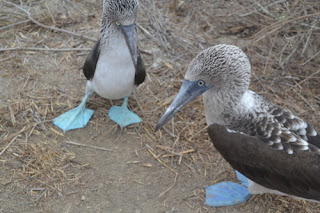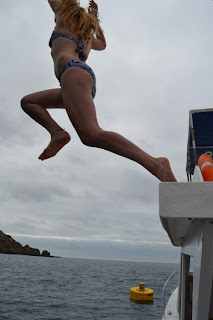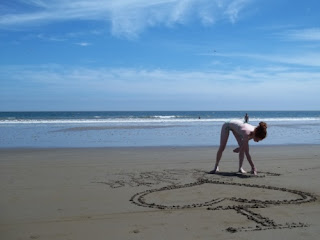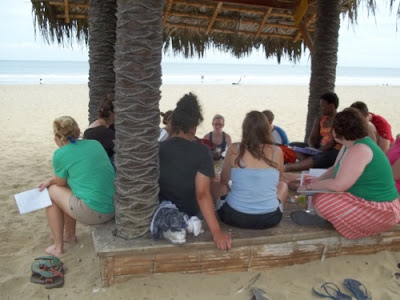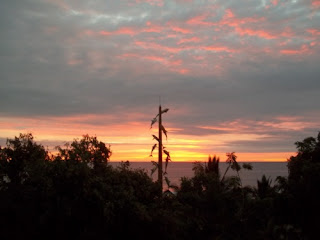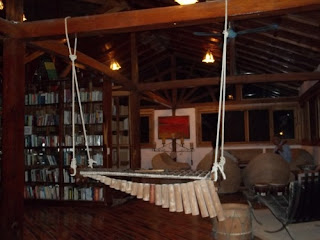Years ago, a dear friend, and one of KEP’s most devoted volunteers, Ron Padgett, visited me at my home after he had returned from a Kellogg Fellows meeting in Brazil. After the meeting, the group had all gone to Iguazu Falls and were stunned by the wondrous beauty of this place. He made me promise that one day Ruthi and I would go there.
For years after, the responsibilities of life, and the lack of time and money, prevented us from making this dream a reality. This year, all the stars were aligned (and we realized we were not getting any younger, and we are only promised this moment). After Roberta and Donnie returned to the U.S., having traveled with us for 5 weeks of our 10-week sojourn, we bought our tickets for Buenos Aires and Iguazu Falls to fulfil our dream and our promise to Ron.

Alvar Nuñez Cabeza de Vaca and his expedition were the first Europeans to view the falls, in 1542. According to Guarani legend, the falls originated when an indigenous warrior named Caroba incurred the wrath of a forest god by escaping in a canoe with a young girl, Naipur, with whom the god was infatuated. Enraged, the god caused the river bend to collapse in front of the lovers, producing a line of waterfalls over which Naipur fell, and at their base, turned into a rock. Caroba survived as a tree overlooking the falls.

Geologists have a better explanation. The Rio Iguazu’s course takes it over a basaltic plateau which ends abruptly, just short of the confluence with the Parana’. Where the lava flow stopped, thousands of cubic meters of water per second now plunge as much as 80 meters into the valley below. Before reaching the falls, the river divides into many channels with hidden reefs, rocky sand islands that separate
the river into the many different falls. In total, the falls stretch around for more than 2 kilometers. Venezuela’s Angel Falls is the world’s highest single waterfall, But Iguazu is the widest set of falls on the planet.
Iguazu Falls (Cataratas de Iguazu) is located in an area where Brazil, Argentina and Paraguay come together, although the falls are primarily in Brazil and Argentina. It really is one of earth’s most wondrous sites. The power and noise of the falls is simply unforgettable. The falls lie in thousands of acres of national park, established in the 1930’s. It is subtropical, with palm trees, ferns and lush green surrounding all. The rainforest is teeming with unique flora and fauna. There are thousands of species of insects and hundreds of species of birds, and many different mammals and reptiles. A few years ago, Iguazu Falls was named a World Heritage Site, and is a finalist to be named one of the new 7 Wonders of the World in Nature.


Although you can reach the falls from Brazil, Argentina or Paraguay, we decided to visit from the Argentinian side. We initially flew into Buenos Aires, traveling on to Puerto Iguazu the next morning. We checked into our hotel, The Orquidea, 4 km. from the town of Puerto Iguazu itself. This small town reminded us of Fernandina Beach, Florida, with its natural beauty and lovely architecture (all the bricks used in the buildings having been made from the deep red earth found everywhere here). Down the center of the main street is green space, with palm trees planted throughout. We had a simple, tasty Italian lunch (Does it get any better than this? A friend of ours always calls this plain, good food) at an open-air restaurant and were amazed to realize most tourists never set foot in this quaint little town located at the confluence of the Rios Parana’ and Iguazu, bypassing it totally in their rush to see the falls. From this vantage point, one can also look across to Brazil and Paraguay.
The next morning we headed to the park. We were pinching ourselves on the way, not believing we were finally here. We were informed that massive rains in Brazil had caused an excess of water going over the falls, shutting down the boat ride to Isla San Martin. Upon leaving the visitor’s center, we took a short walk through the jungle to a train which took us to where we began the trek to the see the greatest of all the falls, Garganta del Diablo (Throat of the Devil). There are walkways built from island to island, which allow people to actually walk over the river. In the distance you can hear this incredible (Ruthi here; we are constantly getting on Rankin for overusing the word incredible. But, I am completely at a loss to think of a better word to use here) ROAR and see a mist of water shooting hundreds of feet into the air. Nothing we ever read prepared us for that moment when we stepped on the platform overlooking The Throat of the Devil. The ground vibrates beneath and the sheer power of what you are experiencing make it very hard to believe there is no higher power at work in the world. This memory will stay with us as long as we live.
We then took the train back to the main station and hiked to the Upper Circuit, where you see, up close and personal, the panoramic view of a series of falls. For Ruthi, this was the moment of special awe, viewing these stunning falls which go on and on. There are overlooks which take you right over the falls to watch the water crashing over the edge as you stand there. By then, we were sufficiently soaked, even though we were wearing our ponchos.

We then hiked (total hiking is supposed to be about 4 kilometers) to a sort of troop transport, where we drove through the jungle for about 20 minutes, to reach the river and the boat. This boat is an inflatable one, holds about 30 people and has a big old inboard motor, with a whole lot of go-juice. We were instructed to take off our shoes, socks and anything else we couldn’t afford to get wet. We were allowed to keep our cameras, knowing there would be a point at which we would be ordered to put them away for their own protection. We blasted up the river with a tremendous view of the jungle and vertical cliffs. Very soon we began to hear the noise and, as we rounded a bend, we headed directly towards the falls. The captain then took us very close to the falls for photos, advised us to put away those cameras, then exploded into the falls. Buckets, gallons, seemingly tons of water were coming down on us all. He then plowed into Garganta del Diablo, where we completely disappeared into the mist of the “throat”.
Completely drenched, we were disembarked on the lower trail, where we then ascended, step by step, back to the top, being able to view the falls at several different levels. As we reached the top, we were totally exhausted and a bit overwhelmed by our experience. We were met by a family of coatis, members of the raccoon family. We had been so absorbed with and stunned by the falls that we had forgotten for a bit having seen butterflies, beautiful birds, an iguana, and those pesky coatis, said to be the first to notice that bag of Ruffles potato chips you’re carrying, and just as persistent as their North American cousins in grouping up to procure those units. Oh, yes; they’re just as cute as our guys, too.
Our Iguazu Falls dream has now been expanded to hopefully live long enough (and healthily enough) to be able to one day share this awesome wonder with our grandchildren. It truly is magic.
Rankin Skinner







